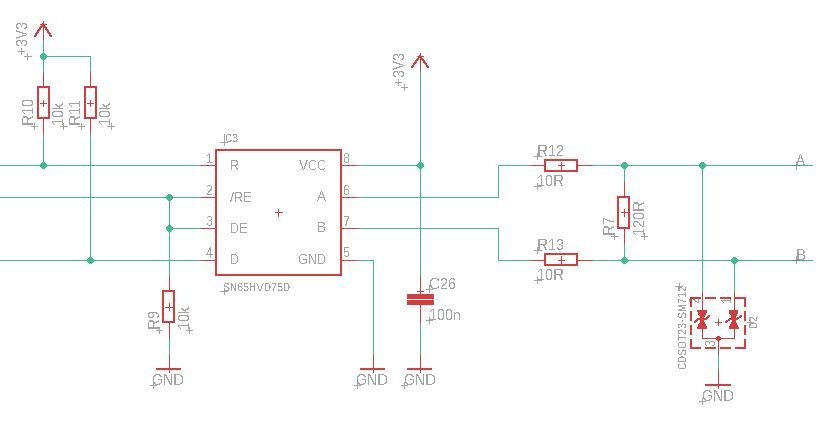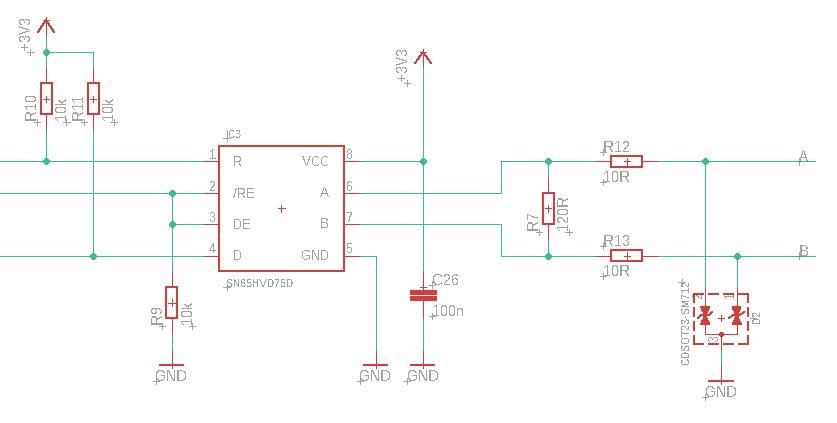Other Parts Discussed in Thread: THVD1410, SN65HVD72
Hello TI Team,
in a project we want to use two SN65HVD75 for a RS485 master and a RS485 slave (half duplex). Could you please review the implementation of the cuicuit? Basically, the circuit was implemented close to the data sheet.
During further research, i noticed that designs were also implemented in which the order of series resistances and termination was changed. In front of the SN65HVD75 cames the termination resistor and then the series resistors. Here is my questions, which solution is the better way for the design?
Another question is about the bias for the RS485 master design. A pullup and a pulldown resistor are typically used for the A and B lines. Are these necessary when using the SN65HVD75? The question here is whether the bias resistors should be placed before or after the series resistors?




